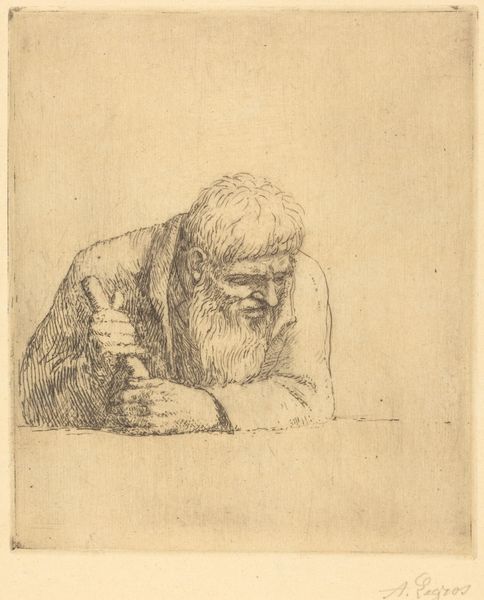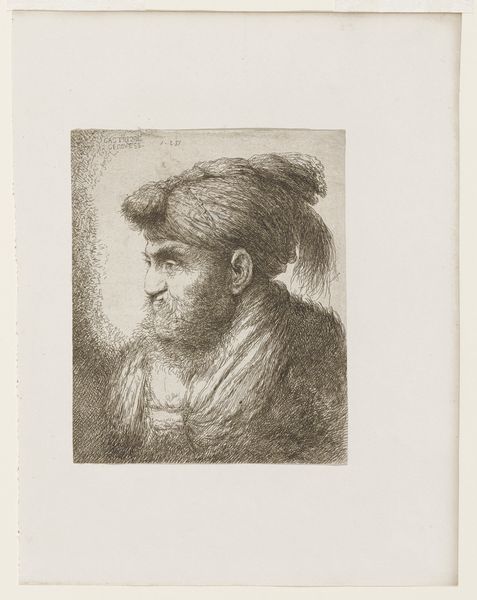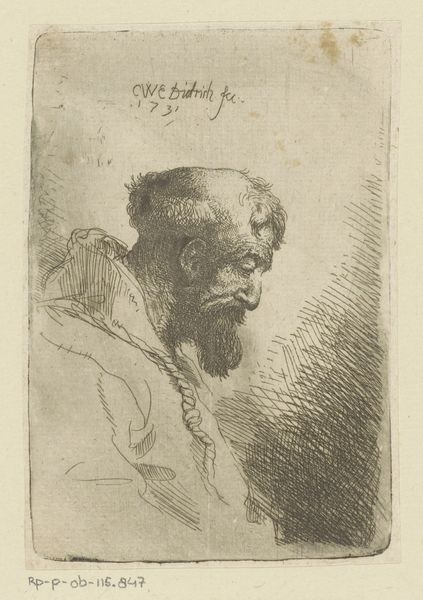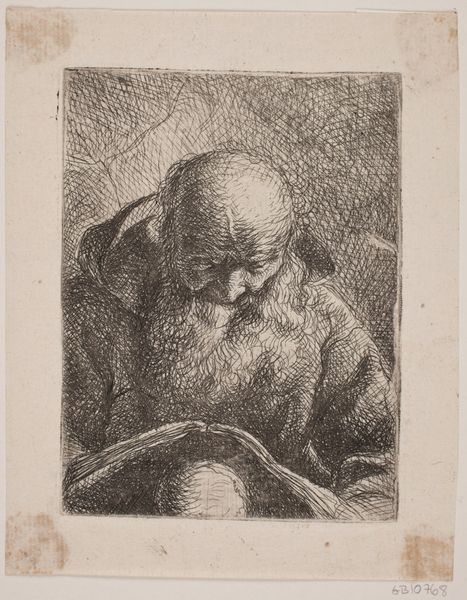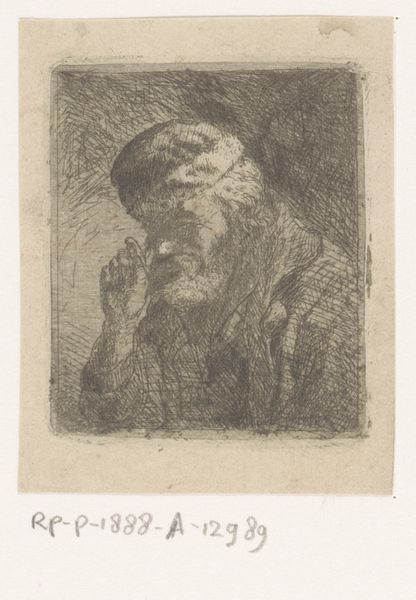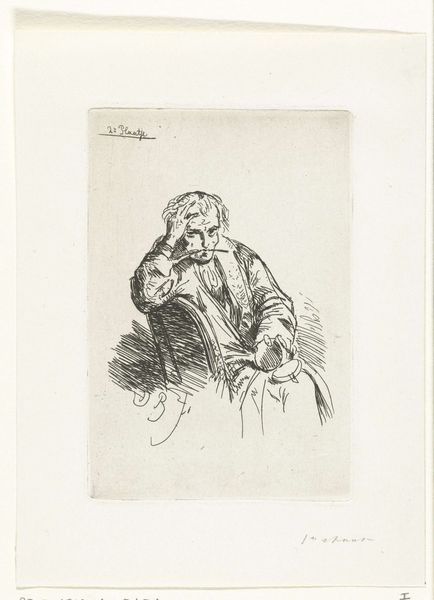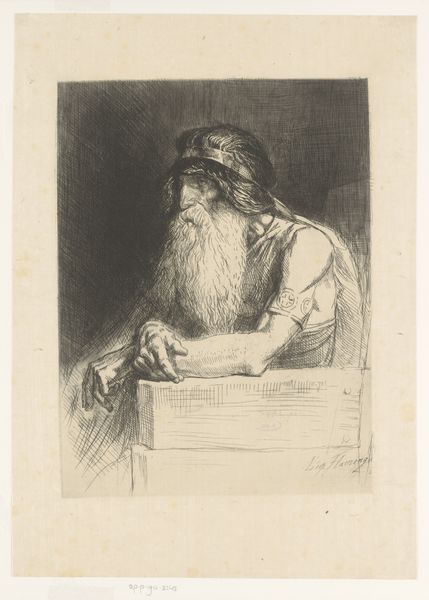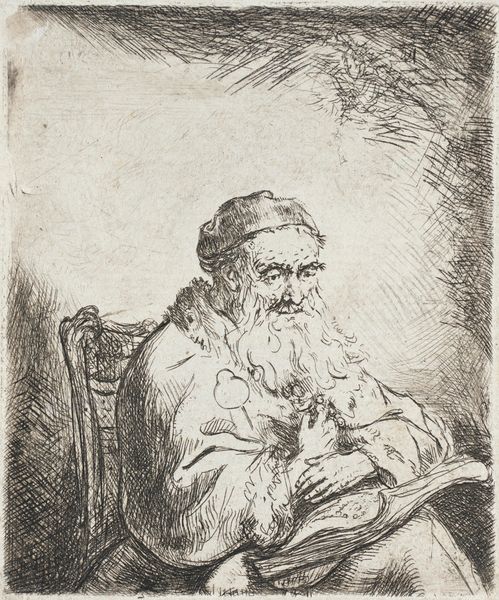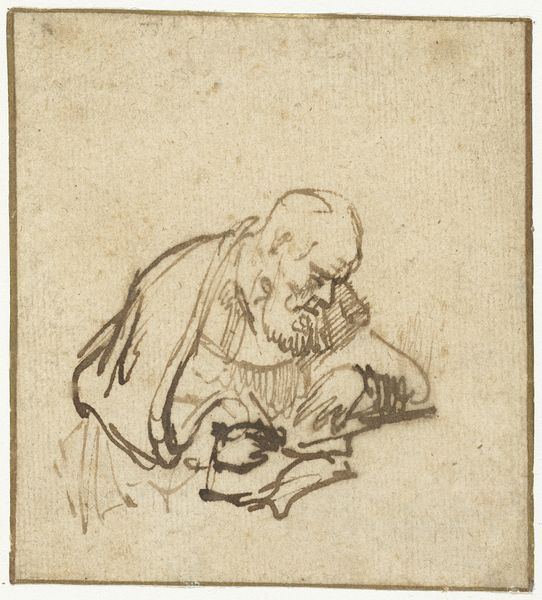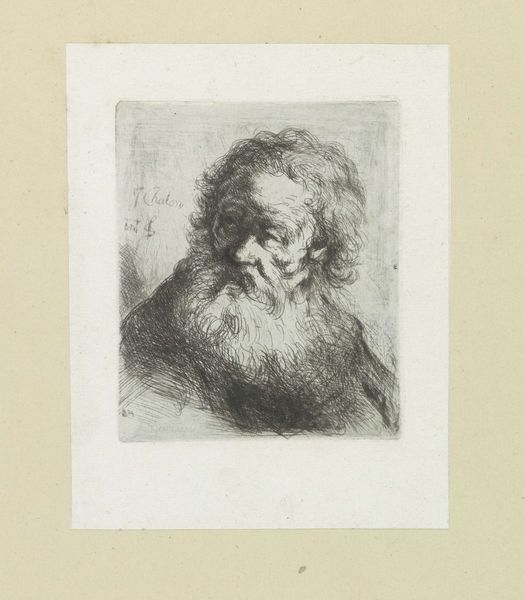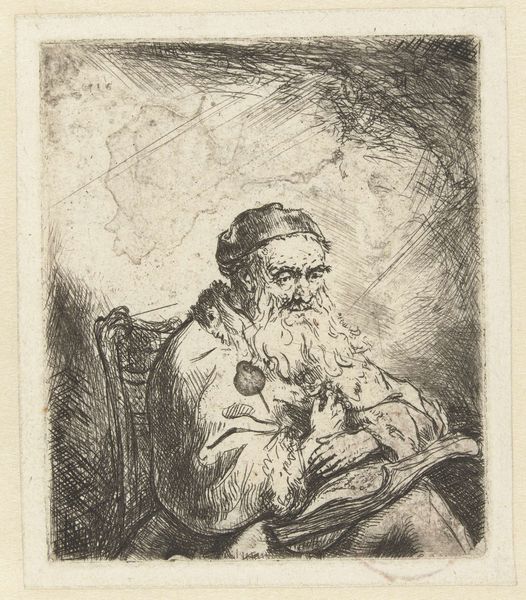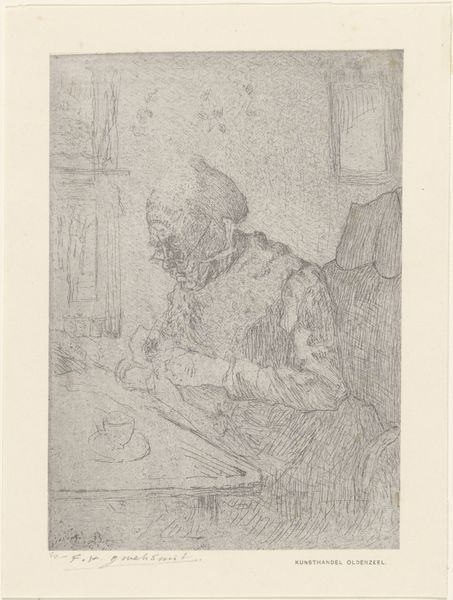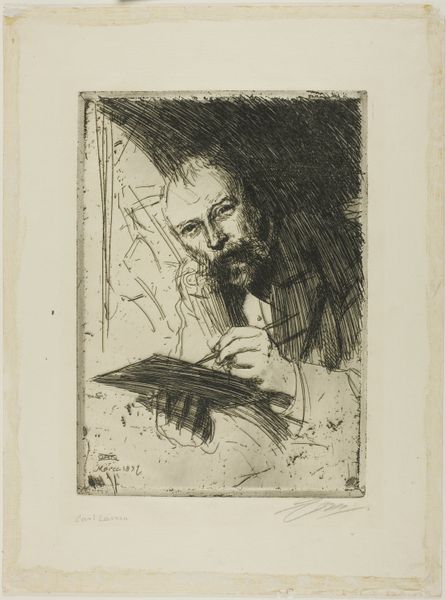
print, etching
#
portrait
# print
#
etching
#
german-expressionism
#
realism
Dimensions: height 203 mm, width 148 mm
Copyright: Rijks Museum: Open Domain
Curator: This is Hermann Struck’s 1913 etching, "Biddende joodse man," or "Praying Jewish Man." It’s a beautiful example of his printmaking. Editor: There’s such intense concentration radiating from this portrait. His brow is furrowed, the hand firmly holding what looks to be a prayer book... there’s an undeniable sense of devotion. Curator: Struck was a German-Jewish artist known for his portraits and landscapes, especially his skill in etching and printmaking techniques. As a committed Zionist, he was known for depicting Jewish subjects with dignity. This portrait reflects his interests. The texture is phenomenal too, isn't it? Editor: The lines definitely contribute to that sense of profound focus. There’s almost a trembling quality to them, which I think is heightened by his inclusion in the German Expressionist movement. Beyond simple realism, it feels charged with emotion, particularly given the historical context of that period. The slight abstraction makes his experience seem universal. Curator: Exactly. While showing respect and adhering to some of the tenants of Realism, he certainly uses techniques aligned to the Expressionist art movement. And thinking about visual symbols, you can see the tefillin, a set of small black leather boxes containing scrolls of parchment inscribed with verses from the Torah, fastened on his head. It's an extremely important piece of devotional gear. Editor: To me the etching, combined with the subject matter, serves as a marker of identity and persistence in a changing, increasingly hostile social climate for Jewish communities in pre-war Europe. One wonders if Struck meant to capture more than just a moment of prayer, perhaps something of a broader cultural resilience. Curator: The prayer shawl wrapped around his shoulders emphasizes the symbolic layers, showing a ritual moment captured during rising sociopolitical tensions, just before the upheaval of the First World War. It underscores not only faith but belonging. Editor: Thinking about its presence here now, displayed in our galleries, is powerful in light of our changed, though still fraught, political realities. Curator: It's a good reminder how art captures and reflects society and culture. Editor: Definitely gives you pause. It makes you reflect on cultural memory. Curator: I'll walk away with that, too. It also speaks to the power of printmaking, as a medium, to deliver these kinds of potent images.
Comments
No comments
Be the first to comment and join the conversation on the ultimate creative platform.

